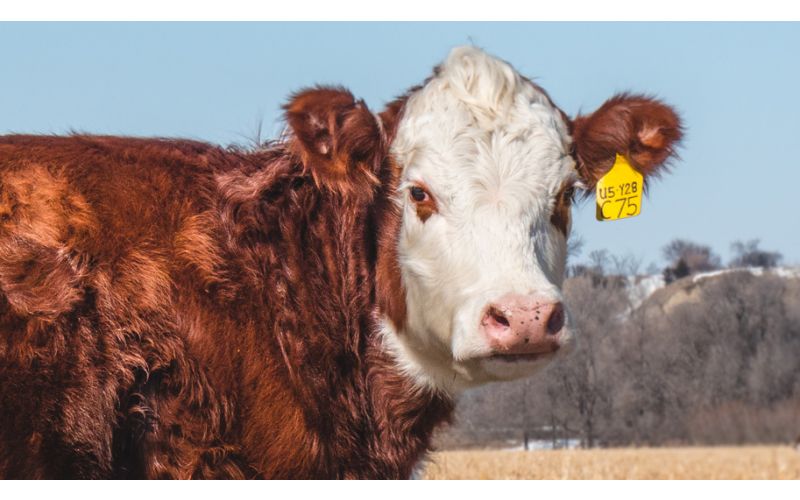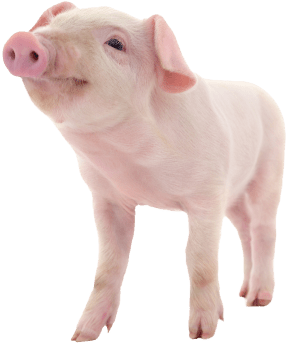
From Branding to Ear Tags: Exploring Livestock Marking Techniques
|
|
Time to read 8 min
 You are being redirected to QC Supply Pharmacy, where you’ll find a wide selection of high-quality prescription and pharmaceutical products for animals of all sizes.
Enjoy the same great service and expertise you trust from QC Supply.
Click below to continue shopping.
Continue
No thanks, stay on the main site
Powered by
You are being redirected to QC Supply Pharmacy, where you’ll find a wide selection of high-quality prescription and pharmaceutical products for animals of all sizes.
Enjoy the same great service and expertise you trust from QC Supply.
Click below to continue shopping.
Continue
No thanks, stay on the main site
Powered by


|
|
Time to read 8 min
Identifying your animals is essential for accurate record keeping. It allows farmers to keep track of ownership, parentage, birth dates, production, health history, and a variety of other recording-keeping duties. It helps producers to make informed decisions on both the individual and herd level, and it is a quick and easy way to complete these tasks efficiently and accurately. As we’ll see, there are many different marking methods, and producers should select the one that works best for their operation.
Livestock need to have an identity as soon as they are born or shortly thereafter. In addition to some federal mandates (generally for tracking livestock sold across state lines for public health), using marking systems is an effective way to record and track animal data. It also proves ownership that can be useful if your animals graze at distance and are at risk of being stolen or becoming lost. In large herds, they help producers tell one animal from another.
While there are many numbering systems, one of the most common systems uses a combination of numbers and letters designating year of birth and birth order. Be careful of using letters that look like numbers—avoid O, Q, V, and I— and combine the remaining 22 letters with numbers to create the livestock marking system. Assign the birth year a letter, say A=2015. Then, assign a number to the animal in order of birth. So, A0015 would mean the fifteenth animal born in 2015. C0007 would mean the seventh animal born in 2017, etc. Using this system, you’re sure to not replicate an animal number over a 22-year span.
Do a little research to investigate other numbering systems that may be more appropriate for your operation.
The swine industry commonly uses ear notching for identifying a pig by litter and as an individual. Generally, pig ears are notched in a “V” shape that indicate litter and a pig’s individual number from that litter. Notching helps distinguish one pig from the next, as replacement breeding stock, and pigs for exhibitions. Ear tags are also used in conjunction with notching in a breeding herd.
Notching systems take advantage of both ears—litter identification information in the right ear and individual identification in the left ear, for example. Notch placement is used to indicate identification—starting at the head and working around the perimeter of the ear until reaching the head again.
To notch an ear, producers use appropriate disinfected tools . Notching appears to cause minimal stress to the animal—the notches will bleed but will quickly scab and heal in about a week—and they can be immediately returned to the crate afterward.
Registered pigs much be notched within seven days of birth.
Ear tags are another common form of identification and are available in a wide variety of forms. Ear tags for cattle have the benefit of displaying not only numbers and letters, but can use indicative colors. These tags can be purchased with numbers on them or blank tags that can be inked by the producer.
Tags are easy to apply and hold up to all sorts of weather (though numbers inked on a blank tag by a producer will likely fade). They’re visible from front and back, which is useful, are easy to read, and are inexpensive. One drawback to ear tags is they can be ripped out. Because of this, it’s a smart idea to use ear tags in tandem with another form of marking.
Some tags are electronic (EID) and come with radio frequency identification technology (RFID) . Because of mad cow disease, animals sold for profit or that are sold across state lines are recommended by the US government to use tags with RFID technology.
Livestock owner identification is easily proved with the use of branding. Branding livestock is typically done in one of three ways: hot branding, freeze branding, and paint branding . Branding evolved in the American West and today is still a commonly used form of livestock marking.
Heat branding, or hot branding, involves applying a heated branding iron in the shape of a stockowner’s mark to the animal. Irons can be heated in coals or a fire, but some producers use electric branding irons or electric sources to heat a traditional iron. The branding iron is only applied as long as it takes to remove the hair and permanently mark the skin. If applied too long, the iron can damage the skin and cause protracted healing time with an increased chance for infection. For long-haired animals, clipping may be necessary first.
In addition to being a permanent marking, branding is also more easily viewed from a distance than ear tags and can be read at any time of year.
Similar to heat branding, freeze branding involves the use of a branding iron that is first chilled in liquid nitrogen or dry ice and alcohol. When applied, the freeze brand kills the skin cells responsible for pigmentation in the hair follicles but does not kill the the follicles that cause growth. This process results in a permanent brand of white or colorless hair in the branded region.
Various factors can affect the success of freeze branding. Older animals require an extended brand application because their pigment follicles are harder to kill. White animals also require more time because they need to be branded bald which means the entire hair follicle is killed. In this instance, the skin itself is the brand. If you brand your animals during spring or fall, you’re more likely to have success—the follicles are more active at these times of year and are more easily destroyed.
Freeze branding irons are usually made of copper, brass, or bronze because of their heat-holding capacities. For both heat and freeze branding, the rump is the preferred location due to its relatively flat surface, though the shoulder is another common location. For either location, the branding area must be well prepared (clipped and clean of loose hair or dirt) for a clear brand. If the brand is moved or unevenly applied during application, the brand will be inconsistent and difficult to read.
Paint branding is a temporary form of branding often used with other permanent forms of identification. Here, traditional branding irons are used to print painted marks on the animal’s back. These temporary marks are useful for animals that must be segregated but returned to a particular herd. They can also be useful for pairing parents and offspring. Paint branding is an effective temporary identification method for sales and/or exhibitions because they’re easily visible and can match a sale directory. Paint branding informs potential buyers what they’re inspecting.
Paint brands are usually applied to the animal’s left side and from head to tail. It’s important not to use too much paint in the application because runny brand marks are difficult to read. Similarly, jumpy animals are also a threat to clear brands.
Paint markings can also be applied with a livestock spray or a paint marking stick .
Tattooing involves punching many small holes with a die in the form of letters and numbers into the animal’s skin. These holes are filled with tattoo ink. Most breed associations require purebred animals to be permanently marked and tattoos are thought by many to be the most effective way to permanently mark livestock as they don’t affect the animal’s appearance or reduce its value.
Different species are usually tattooed in different locations. Cattle, sheep, and goats are typically tattooed in the ear, above the first cartilage ridge so as to not interfere with any ear tags. Sheep are typically tattooed on the inside of their flanks. Horses are often tattooed on the inside of their lips.
Swine are typically tattooed inside the ear, like cattle and goats, but they are also often tattooed on the shoulder when being identified for slaughter.
Green ink is a recommended color for dark pigmented ears. And, since tattoos are only visible under close inspection (and sometimes with the aid of a flashlight), they are best used with other more visible marking forms.
Another form of permanent identification, nose prints function in much the same way as fingerprints—lines and dots create a profile unique to the animal. When two prints are compared, there must be a minimum of six matching identification marks to establish a match.
For obvious reasons, nose prints can be tricky to obtain—the slightest movement will smear the print and animal noses are often moist. It can be too easy to over ink a nose, as well, leading to an indistinct print. But, with an accurate, clear print, you’ll have an absolutely unique identity mark.
Electronic identification systems have been around for many years and are widely used across the globe. We’ve already mentioned EID ear tags , but other common forms include the use of implanted microchips and electronic collars.
Electronic microchips are implanted beneath the skin, typically between the shoulder blades or near the base of the ear. These electronic devices include a microchip with a radio transponder and antennae, are permanent, and are easy to have implanted. However, they require additional equipment to read and usually can not be read from a distance.
Electronic collars are easy to use. They involve a microchip in a tag worn around the neck that is read by a scanner. You only need be careful of the chain, as with any collar—you don’t want it to be too tight, but not so loose it’s prone to snagging.
The microchips carry stock information that corresponds to a computer file for the animal. Consequently, they are able to track and manage a large amount of data. Electronic tags are often used to dispense specific amounts of feed and can be useful in the milking parlor to record data for each milking.
Neck chains are also widely used forms of identification. Tags can be either electronic or standard number tags and are mostly trouble-free. As mentioned, you don’t want them too tight or too loose, and if worn by a growing animal, you’ll want to keep an eye on it to make sure it doesn’t become too tight over time. One downside of neck chains is they are difficult to read in groups of animals.
Leg bands are typically used in the poultry industry to keep track of individual birds, as are wing tags. Wing tags are usually applied a day after hatching and leg bands used when the birds mature.
The need to track data and prove ownership is essential to any efficient livestock operation. Luckily, there are many available methods, each with its advantages and disadvantages, that will help producers organize their herd for maximum profitability.
What about you? Tell us how you mark and organize your livestock in the comments section!
Hopefully, you found the above article on marking livestock helpful. If you're looking for the right products and equipment for this important work and other tasks, you'll probably find our large selection of livestock supplies helpful, too. We also carry other livestock items, including:
And if you're looking for other helpful articles, check out: